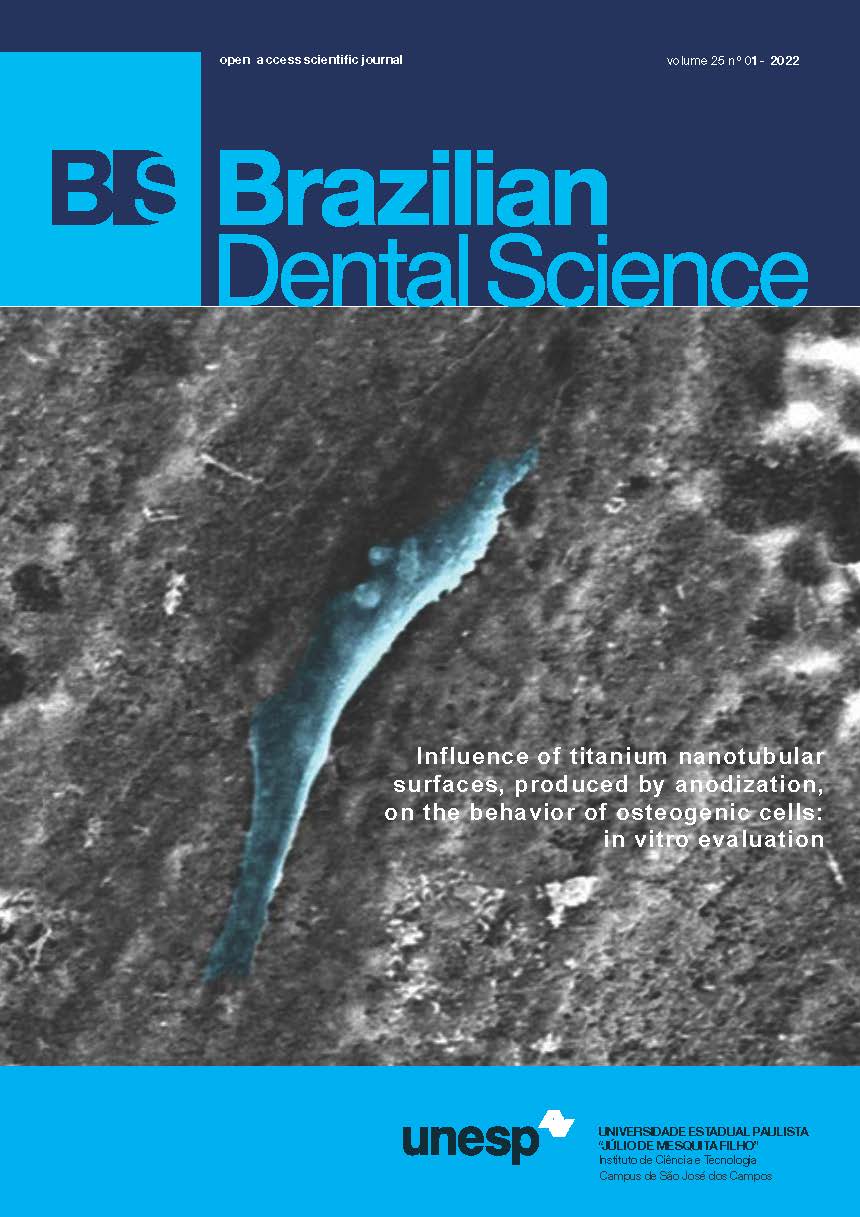Effect of immediate dentin sealing and temporary cement removal on bond strength of resin cements to dentin
DOI:
https://doi.org/10.4322/bds.2022.e2729Abstract
Objective: To evaluate the influence of immediate dentin sealing (IDS) and mechanical methods for removing the
temporary cement on the bond strength between dentin and resin cements. Material and Methods: Bovine incisors
were ground until dentin exposure and divided according to two factors: “dentin surface treatment”’ - cleaning
with manual dental excavator (DE), with Robinson bristle brush and pumice paste (PP) or IDS application with
Single Bond 2 (IDS/SB+PP) or Single Bond Universal (IDS/SBU+PP) plus cleaning with PP; and “resin cement”
- Self-adhesive (RelyX U200) or conventional cement with self-etching adhesive (Multilink Automix). Simulating
provisional restoration, acrylic resin plates were cemented onto the dentin surface (with or without IDS) with a
non-eugenol temporary cement, and stored in distilled water (37 ºC; 7 days). The acrylic plates were removed, the
dentin surface was cleaned (PP or DE), and starch tubes were positioned on the dentin where the resin cements
were applied. After 24 h, the specimens were submitted to a microshear test (wire-loop method). Results: Twoway
analysis of variance showed statistically significant influence of dentine surface treatments (p< 0.001) and
resin cement (p= 0.001) in the bond strength values. The IDS/SBU+PP/U200 (7.24 MPa) and IDS/SBU+PP/
MULTI (6.40 MPa) groups presented higher values when compared to cleaning with DE (DE/U200= 4.60 MPa;
DE/MULTI= 1.45 MPa) and PP (PP/U200= 3.74 MPa; PP/MULTI= 3.14 MPa) Statistical difference was also
found between the cements when dental excavator treatment was used (RelyX U200 > Multilink Automix). The
IDS/SBU+PP protocol presented a higher percentage of cohesive failures. The micrographs showed differences
in dentin surface characteristics among the groups. Conclusion: Immediate dentin sealing increased the bond
strength of the resin cements to dentin compared to mechanical cleaning only, regardless the resin cement.
KEYWORDS
Cleaning; Dentin sealing; Provisional cement; Resin cement.
Downloads
Downloads
Published
Versions
- 2022-01-21 (2)
- 2022-01-03 (1)
How to Cite
Issue
Section
License
Brazilian Dental Science uses the Creative Commons (CC-BY 4.0) license, thus preserving the integrity of articles in an open access environment. The journal allows the author to retain publishing rights without restrictions.
=================




























